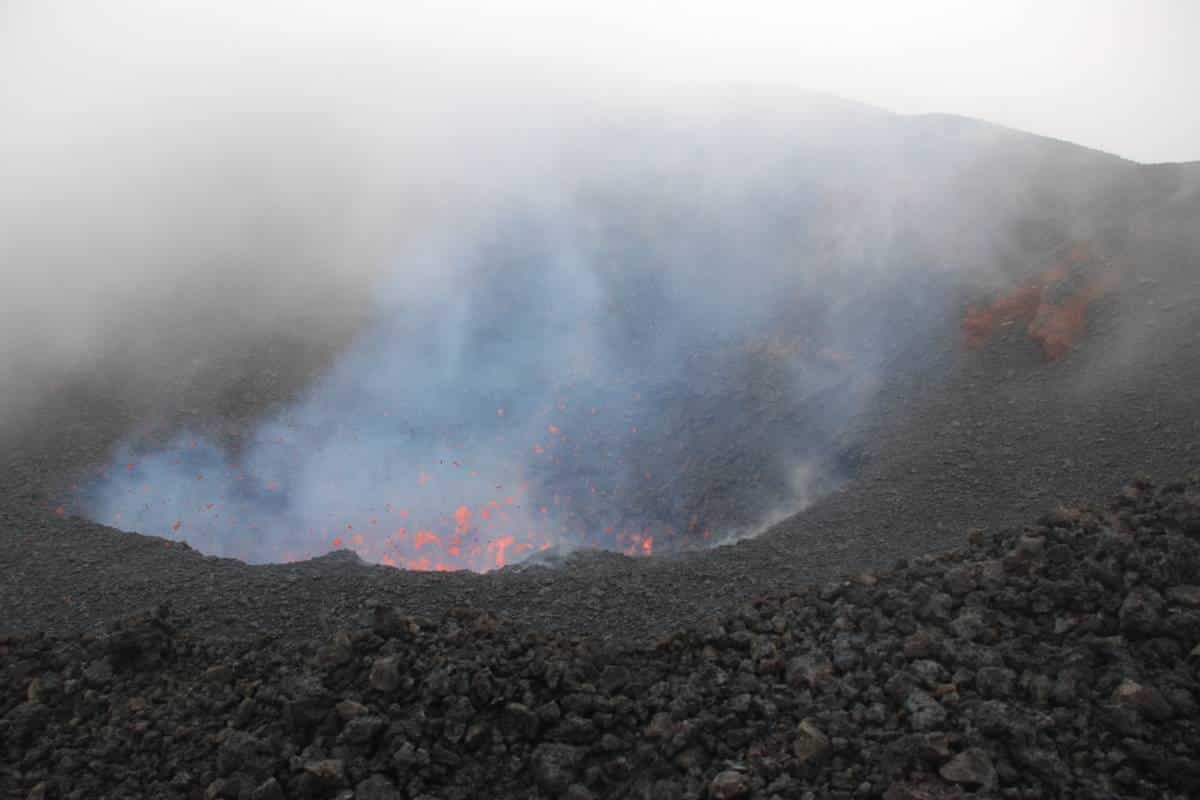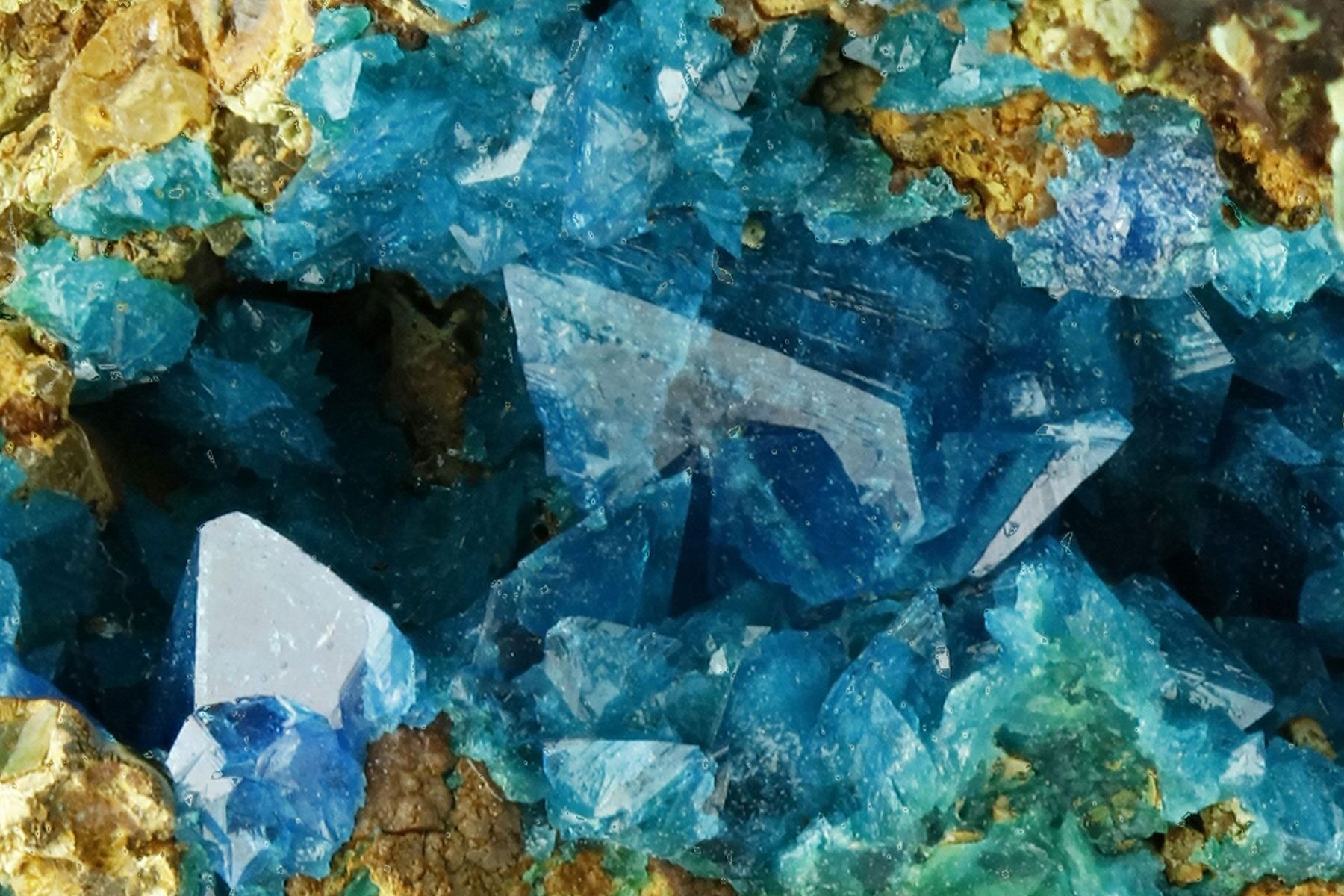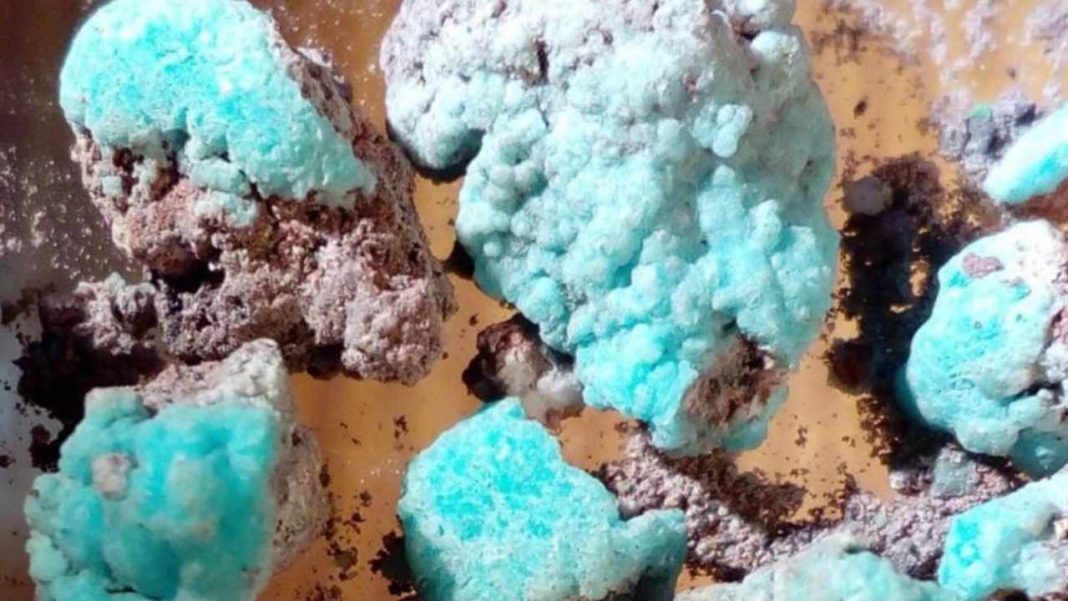The mineral was found in the volcanic landscape of Russia’s far east, atop the Tolbachik volcano in the Kamchatka Peninsula.
Tolbachik’s eruptive history traces back thousands of years, but in recent times, two notable events stand out: the ‘Great Tolbachik Fissure Eruption’ of 1975–1976, and a second, lesser follow-up that took place between 2012–2013.

The specimen studied here was discovered in 2000, near the second cinder cone associated with the 1975 eruption, and was stored for later analysis. It may have been a long time coming, but that analysis now reveals that this vibrantly blue mineral exhibits peculiar molecular hallmarks only rarely seen before now.
The copper atom in the crystal structure of petrovite has an unusual and very rare coordination of seven oxygen atoms,” explains lead researcher and crystallographer Stanislav Filatov from St Petersburg University.

“Such coordination is characteristic of only a couple of compounds, as well as of saranchinaite.”
“At present, the biggest problem for this use is the small amount of a transition metal – copper – in the crystal structure of the mineral,” Filatov says.
“It might be solved by synthesizing a compound with the same structure as petrovite in the laboratory.”
The findings are reported in Mineralogical Magazine.















